Abstract
A household survey of 651 children aged 12-23 months in Zone 3 of Dhaka City carried out in 1995 revealed that 51% of them had fully completed the series of childhood immunizations. Immunization coverage in slum households was only half that in non-slum households. Apart from residence in a slum household, other characteristics strongly associated with the completion of the entire series of childhood immunizations included the following: educational level of the mother, number of children in the family household, mother's employment status, distance from the nearest immunization site, and number of home visits from family-planning field workers. The findings point to the need to improve childhood immunization promotion and service delivery among slum populations. Two promising strategies for improving coverage are to reduce the number of missed opportunities for immunization promotion during encounters between health workers and clients, and to identify through visits to households those children who need additional immunizations. In the long run, increasing the educational level of women will provide a strong stimulus for improving childhood immunization coverage in the population.
Full text
PDF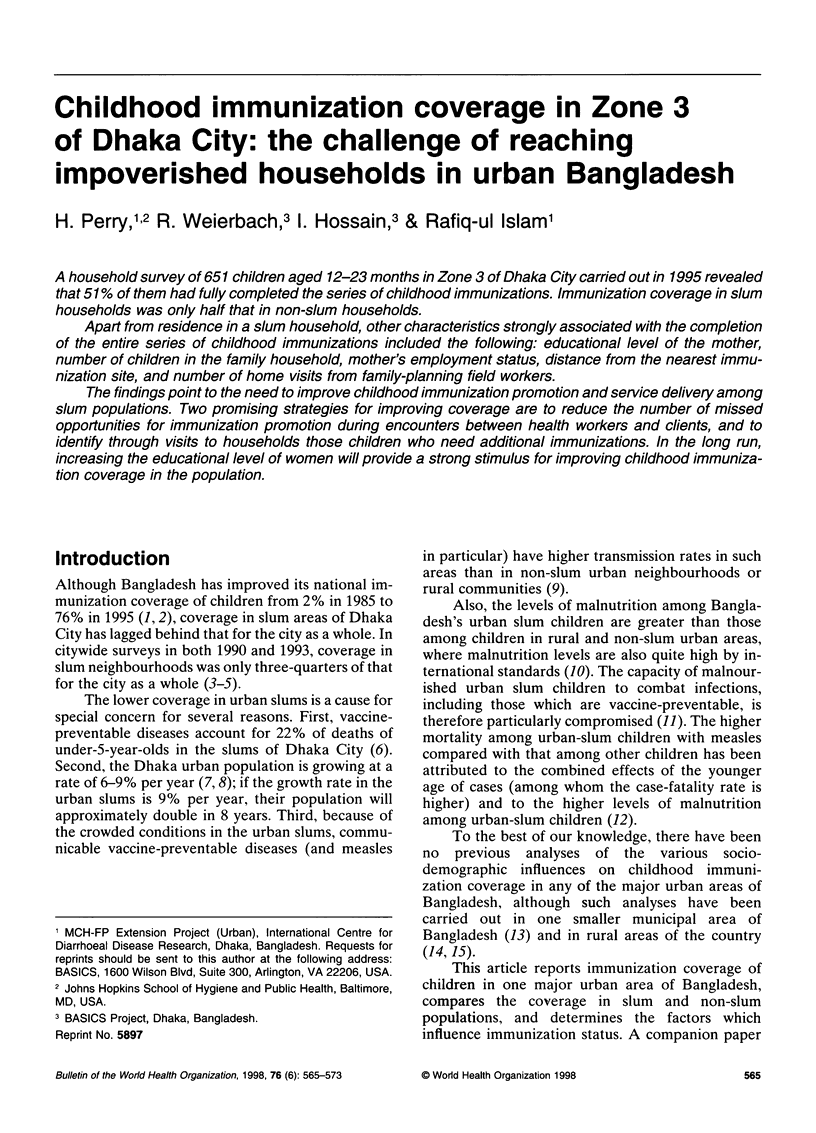
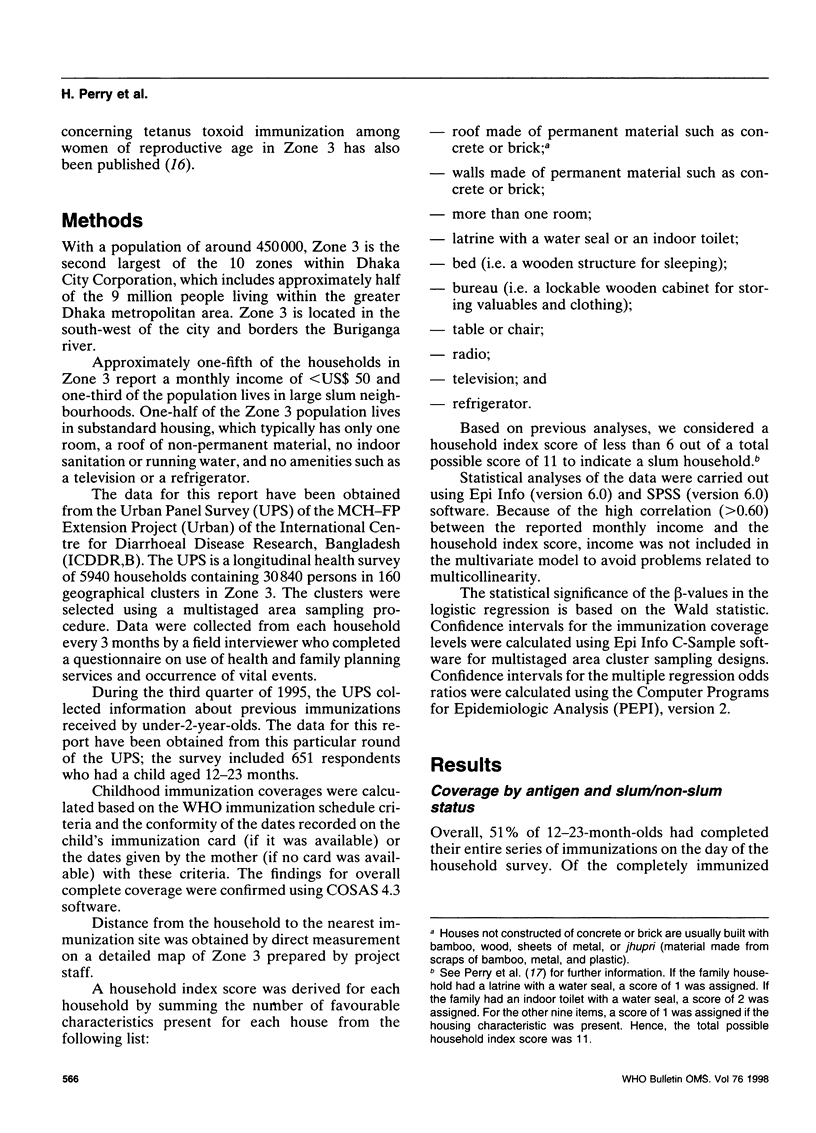
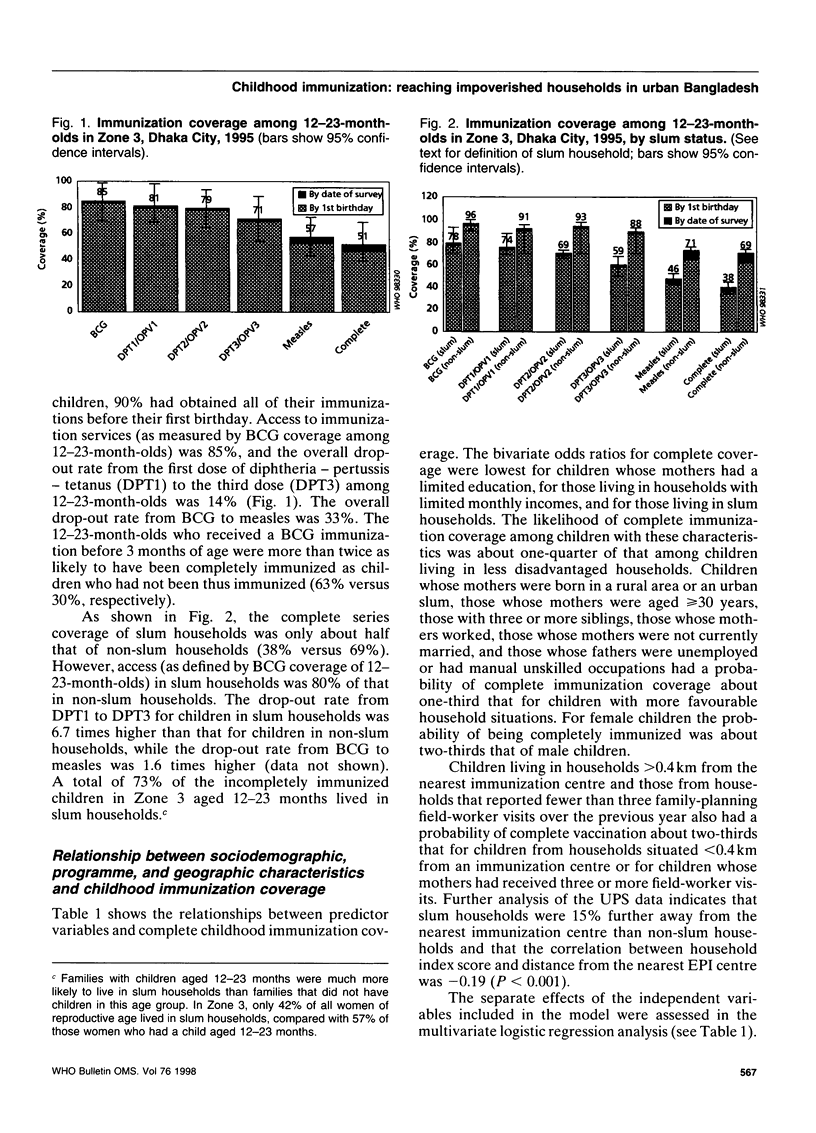
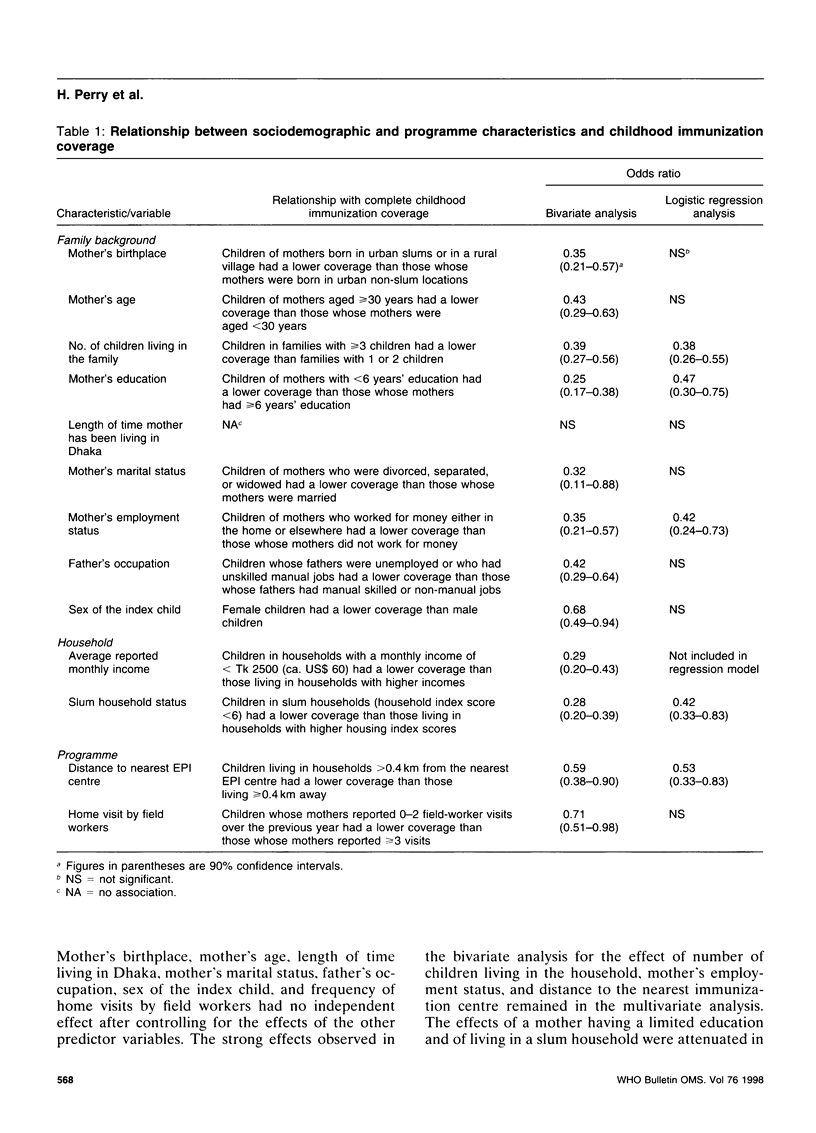
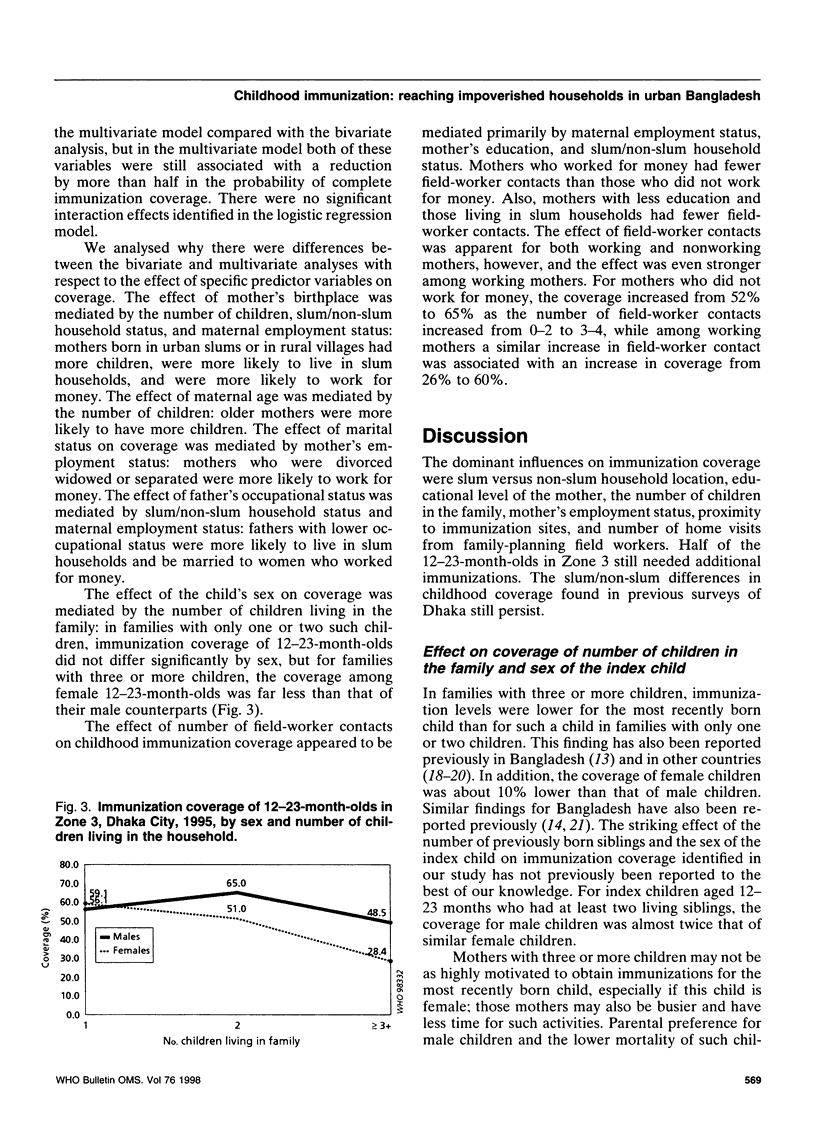
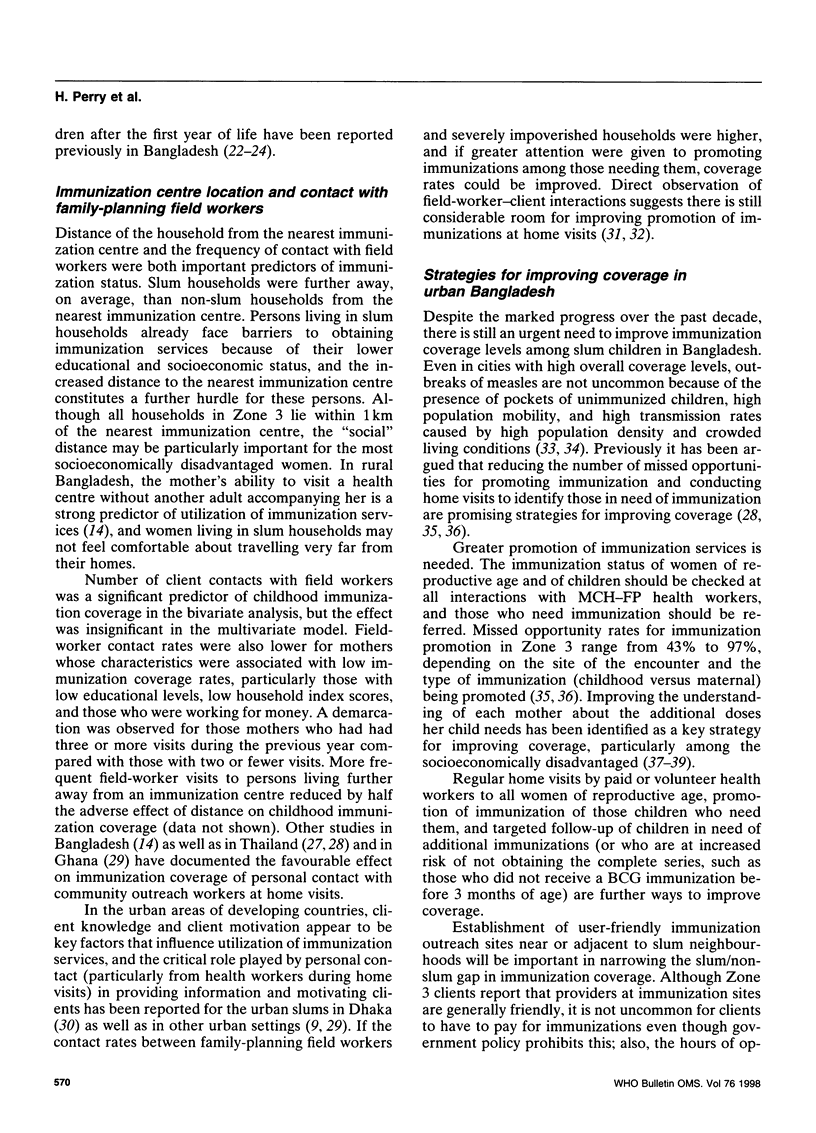
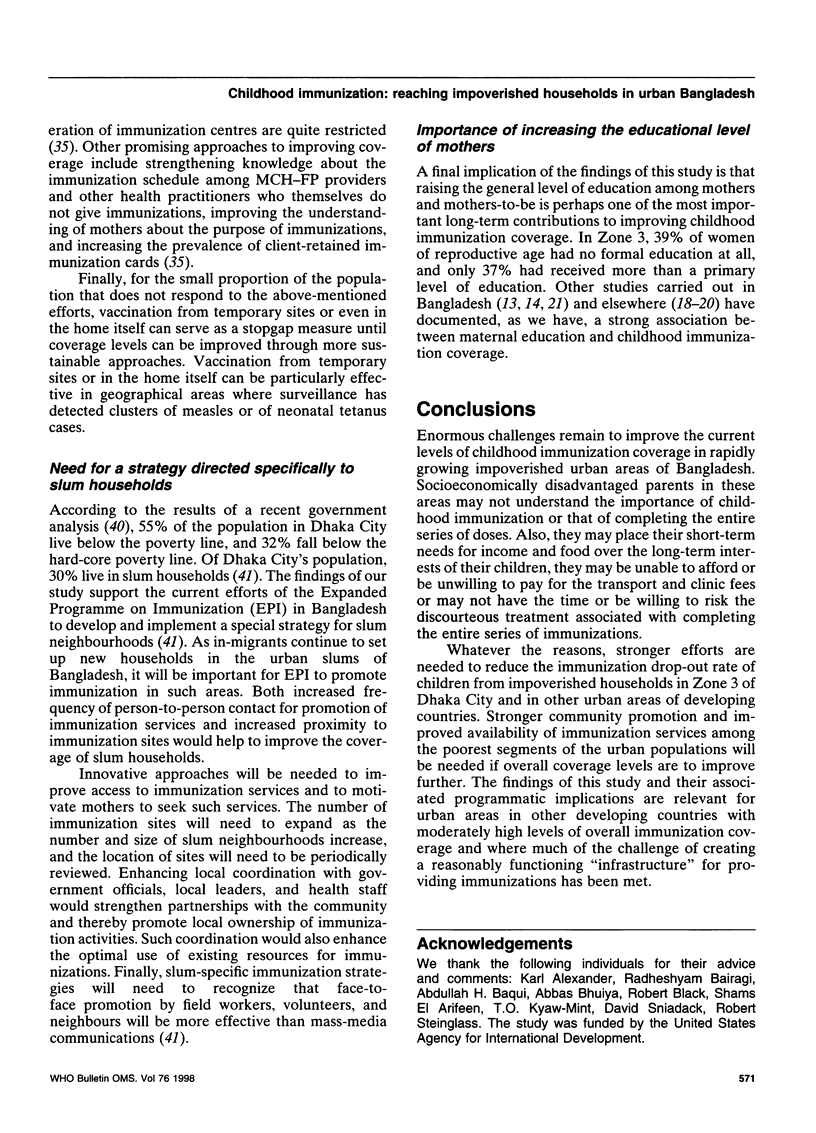
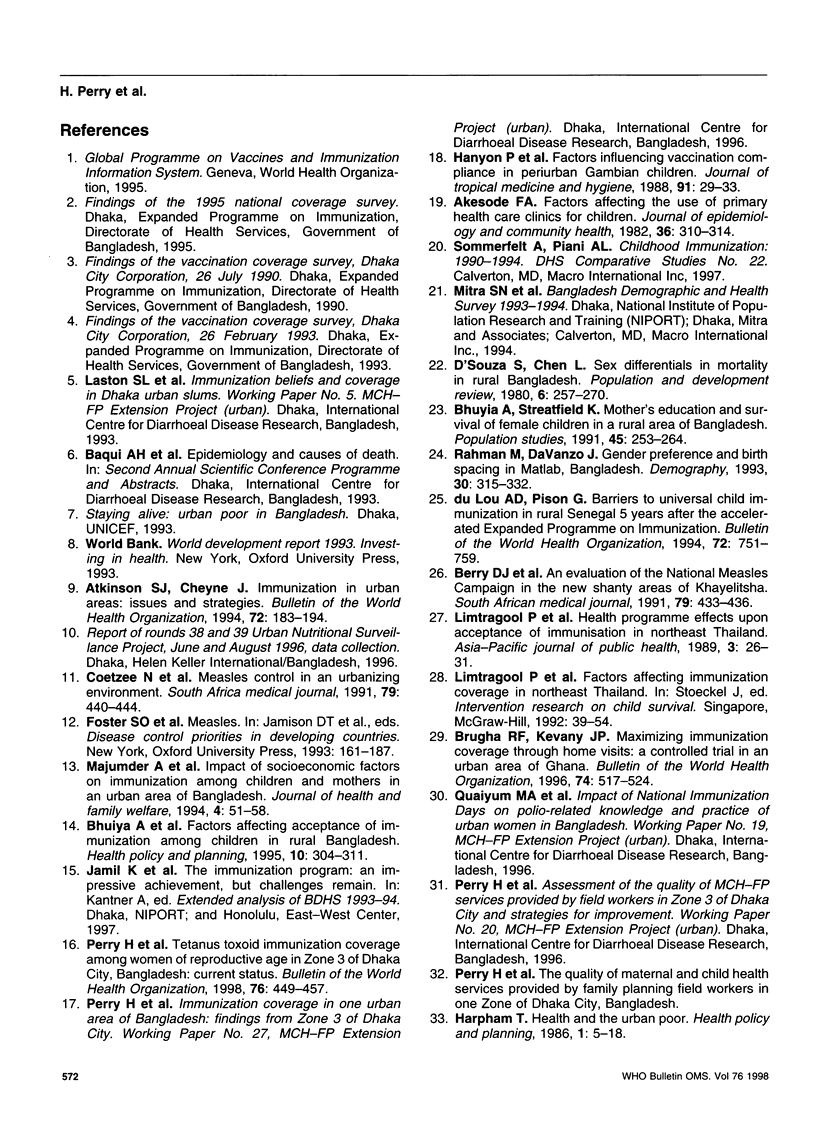
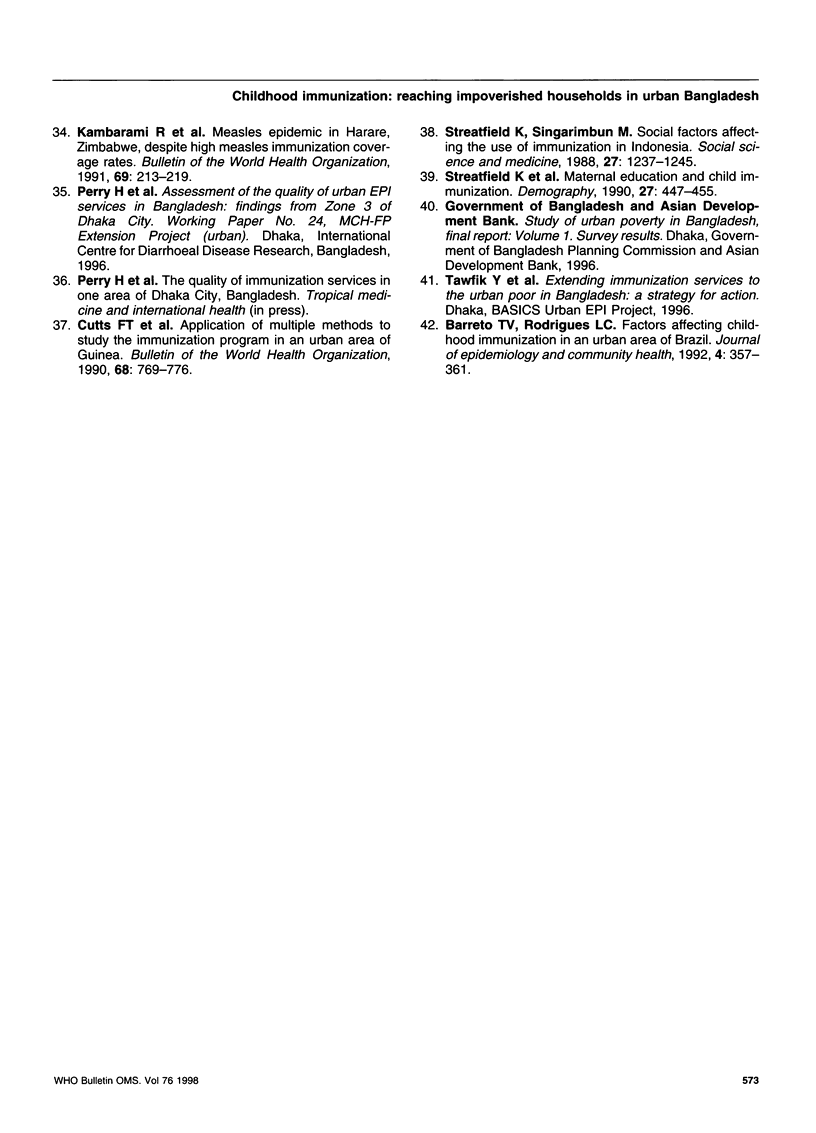
Selected References
These references are in PubMed. This may not be the complete list of references from this article.
- Akesode F. A. Factors affecting the use of primary health care clinics for children. J Epidemiol Community Health. 1982 Dec;36(4):310–314. doi: 10.1136/jech.36.4.310. [DOI] [PMC free article] [PubMed] [Google Scholar]
- Atkinson S. J., Cheyne J. Immunization in urban areas: issues and strategies. Bull World Health Organ. 1994;72(2):183–194. [PMC free article] [PubMed] [Google Scholar]
- Barreto T. V., Rodrigues L. C. Factors influencing childhood immunisation in an urban area of Brazil. J Epidemiol Community Health. 1992 Aug;46(4):357–361. doi: 10.1136/jech.46.4.357. [DOI] [PMC free article] [PubMed] [Google Scholar]
- Berry D. J., Yach D., Hennink M. H. An evaluation of the national measles vaccination campaign in the new shanty areas of Khayelitsha. S Afr Med J. 1991 Apr 20;79(8):433–436. [PubMed] [Google Scholar]
- Bhuiya A., Bhuiya I., Chowdhury M. Factors affecting acceptance of immunization among children in rural Bangladesh. Health Policy Plan. 1995 Sep;10(3):304–312. doi: 10.1093/heapol/10.3.304. [DOI] [PubMed] [Google Scholar]
- Brugha R. F., Kevany J. P. Maximizing immunization coverage through home visits: a controlled trial in an urban area of Ghana. Bull World Health Organ. 1996;74(5):517–524. [PMC free article] [PubMed] [Google Scholar]
- Coetzee N., Berry D. J., Jacobs M. E. Measles control in the urbanising environment. S Afr Med J. 1991 Apr 20;79(8):440–444. [PubMed] [Google Scholar]
- Cutts F. T., Glik D. C., Gordon A., Parker K., Diallo S., Haba F., Stone R. Application of multiple methods to study the immunization programme in an urban area of Guinea. Bull World Health Organ. 1990;68(6):769–776. [PMC free article] [PubMed] [Google Scholar]
- Desgrées du Loû A., Pison G. Barriers to universal child immunization in rural Senegal 5 years after the accelerated Expanded Programme on Immunization. Bull World Health Organ. 1994;72(5):751–759. [PMC free article] [PubMed] [Google Scholar]
- Kambarami R. A., Nathoo K. J., Nkrumah F. K., Pirie D. J. Measles epidemic in Harare, Zimbabwe, despite high measles immunization coverage rates. Bull World Health Organ. 1991;69(2):213–219. [PMC free article] [PubMed] [Google Scholar]
- Limtragool P., Panichacheewakul P., Stoeckel J., Charoenchai A. Health programme effects upon acceptance of immunisation in northeast Thailand. Asia Pac J Public Health. 1989;3(1):26–31. doi: 10.1177/101053958900300105. [DOI] [PubMed] [Google Scholar]
- Perry H., Weierbach R., Hossain I., Islam R. Tetanus toxoid immunization coverage among women in zone 3 of Dhaka city: the challenge of reaching all women of reproductive age in urban Bangladesh. Bull World Health Organ. 1998;76(5):449–457. [PMC free article] [PubMed] [Google Scholar]
- Rahman M., Da Vanzo J. Gender preference and birth spacing in Matlab, Bangladesh. Demography. 1993 Aug;30(3):315–332. [PubMed] [Google Scholar]
- Streatfield K., Singarimbun M., Diamond I. Maternal education and child immunization. Demography. 1990 Aug;27(3):447–455. [PubMed] [Google Scholar]
- Streatfield K., Singarimbun M. Social factors affecting use of immunization in Indonesia. Soc Sci Med. 1988;27(11):1237–1245. doi: 10.1016/0277-9536(88)90353-x. [DOI] [PubMed] [Google Scholar]


